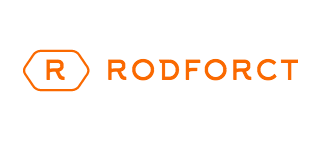11 Mar Simple measures
A review of insulation materials reveals that PIR provides a simple solution to constructing greener buildings, says Dale Kaszycki, marketing manager, EcoTherm Insulation (UK).
While the construction industry continues to work towards the ultimate goal of zero carbon buildings, improving the energy-efficiency of existing housing stock is equally important in the drive to cut carbon emissions. Alongside more extensive – and expensive – solutions like rooftop solar panels and ground-source heat pumps, there are many simple and effective measures that can make a difference to a building’s energy use, from fitting low-energy lightbulbs to installing better insulation.
Insulating a building against heat loss is widely recognised as one of the easiest and most cost-efficient ways of enhancing energy-efficiency. In fact, we know from many case studies that it is possible to achieve most progress towards ‘zero carbon’ for least cost simply by enhancing wall, roof or underfloor insulation.
It is estimated that if every home in the UK had the recommended level of wall and loft insulation, carbon emissions could be reduced by as much as 10.8 million tonnes. As well as saving the planet, that could save householders millions of pounds on their heating bills. Effective insulation can also boost the benefits of more energy-efficient systems such as underfloor heating, so there are advantages all round.
Alongside schemes like the Code for Sustainable Homes that focus on the new-build sector, there are also initiatives to upgrade existing properties to new eco standards. In the private rented market alone there are thought to be over three million properties rated G or F – the worst ratings in the energy-efficiency scale. In a bid to address this, the coalition government’s Green Deal, due to come into effect from autumn 2012, will provide a framework for private firms to offer energy-saving improvements to households and businesses on a ‘pay as you save’ scheme with no upfront costs.
Speaking at the Zero Carbon Hub’s annual conference earlier this year, housing minister Grant Shapps talked about extending the Green Deal to new homes in order to allow developers to recover the cost of building more energy-efficient properties, while buyers would reap the benefits of savings on future energy bills.
Improving insulation levels is seen as a relatively simple, effective environmental upgrade for existing houses under the Green Deal and the recently revamped Warm Front scheme. The latter provides grants to qualifying households for installing insulation and heating improvements and started accepting new applications in April. Both these initiatives look set to increase demand for insulation products in the new-build and refurbishment markets. The question is, which insulation material stacks up when it comes to important factors such as thermal performance, ease of installation and sustainability?
Part L 2010 announced the aim to cut carbon emissions in new-builds by 25%. According to some calculations, the required improvement in U-values within the building fabric to achieve this objective could mean raising insulation levels by as much as 45% overall. This poses the question of how to accommodate extra insulation without compromising valuable internal space – a particular concern with loft insulation, where headroom is often already at a premium. Polyisocyanurate (PIR) insulation boards for walls, roofs, floors and underfloor heating installations offer a solution.
A strong yet lightweight material with low thermal conductivity, PIR makes it possible to add insulation with minimum demand for thickness.
Compared with some other common insulation materials, PIR insulation boards are remarkably thin, so they do not compromise room (or loft) dimensions – an important consideration for new homes and refurbishment projects. To illustrate this, insulating a typical pitched roof to achieve a U-value of 0.16W/m2K requires just a 130mm layer of PIR, compared to 170mm of expanded polystyrene, 225mm of extruded polystyrene and 255mm of glass wool or mineral wool.
Furthermore, recent advancements in the thermal conductivity or lambda value of PIR insulation boards mean that, in many cases, insulation can be enhanced with the same thickness of insulation used previously, thereby satisfying new regulations and saving construction cost and usable space. As an example, EcoTherm PIR boards, which have a lambda value of just 0.022W/mK, represent significantly better ‘per unit’ thickness than glass or mineral wool.
The new PIR/plasterboard laminates, such as EcoTherm’s Eco-Liner, mean that you can now insulate and dry-line loft ceilings, as well as solid and cavity walls, in a one-board application. Depending on the design detailing, insulated plasterboard could be used for all or part of the target U-value performance requirement, whilst keeping construction thickness to a minimum.
Another new development in EcoTherm’s PIR range for the RMI (repairs, maintenance and improvements) market is Eco-Loft. A combination of PIR insulation with a thermal conductivity of 0.022W/mK factory-bonded to chipboard,
Eco-Loft offers a cost-effective and space-saving alternative to separate loft blanket insulation and floor decking in a ‘cold’ loft application.
The case for increasing insulation to create more energy-efficient buildings seems clear enough, but not all insulation materials are the same when it comes to their sustainability during manufacture and installed life. Carbon-reducing performance aside, PIR can claim to be a green solution in its own right. It is an extremely durable material that is good for the lifetime of the building – unlike some types of insulation, which degrade over time, potentially limiting the energy-efficiency necessary for a zero carbon rating to just a few years.
PIR insulation is also CFC- and HCFC-free, has zero ozone depletion potential, and when the time does come for the insulation to be removed it can be fully recycled. Indeed, when properly installed, PIR insulation board has a carbon investment payback of only a few months; even the low carbon cost of manufacturing PIR boards can be repaid by the saving of carbon emissions from the insulated buildings in less than one year. With all these benefits, the road to greener buildings could well be paved with PIR insulation.

Sorry, the comment form is closed at this time.